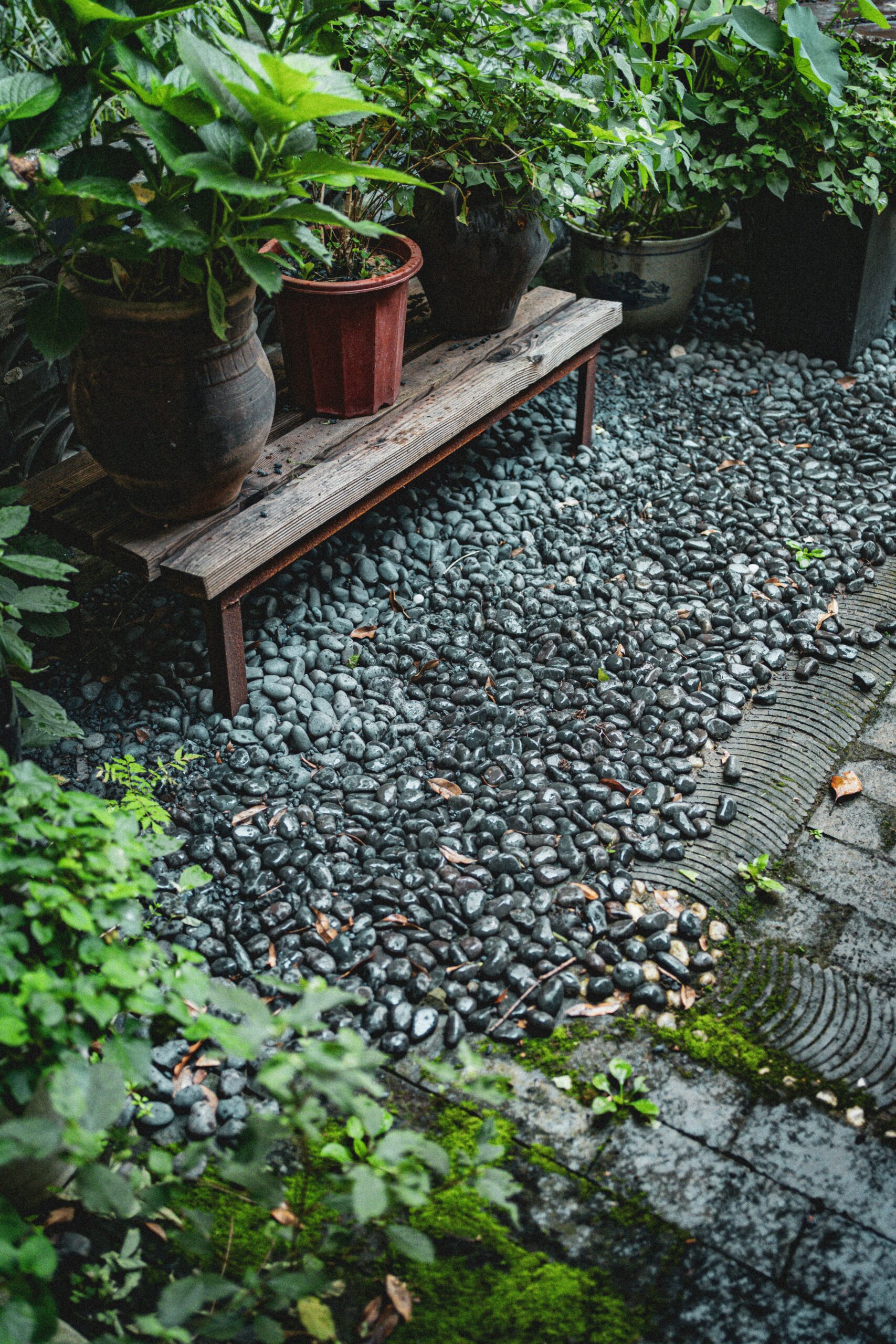The crunch of stones underfoot is a sound so common that it often goes unnoticed. For generations, gravel and stone have been relegated to these roles: a driveway surface, a drainage solution, or just a forgettable filler for awkward corners of the yard.

We see them as a means to an end, a commodity purchased by the ton to solve a problem. But this perspective overlooks a deep and ancient truth. These materials are the earth’s own palette, fragments of geological time possessing an inherent character, texture, and silent history. To see them merely as functional is to miss their true potential.
Within these simple stones lies the capacity to create landscapes that are not just covered, but composed, creating outdoor spaces with a profound sense of permanence, artistry, and connection to the natural world.
The Chromatic and Textural Language of Gravel
Gravel is not always boring grey. It is a surprisingly diverse medium, speaking a subtle language of color and texture. Exploring the options available when sourcing bulk gravel Columbus Ohio reveals a spectrum that ranges from the warm, earthy tones of river rock to the cool, deep charcoals of slate chips and the brilliant white of crushed marble.
This chromatic variety allows a designer to paint with stone, using warm hues to create a welcoming, sun-drenched feel for a patio, or cool tones to craft a serene, contemplative path for a quiet garden corner.
Beyond color, the physical form is critical. The fine, smooth texture of pea gravel offers a soft surface that creates a gentle sound, while larger, angular crushed stone provides a bold, stable foundation with a more rugged aesthetic. By thoughtfully selecting and combining these different choices, you can define distinct zones, create intricate ground-level mosaics, and guide movement through the landscape with purpose and artistry.
The Singular Power of Stone as a Sculptural Anchor
While gravel forms the canvas, larger stones provide the powerful, anchoring strokes of a design. A single, thoughtfully placed stone can transform a simple garden bed into a dramatic scene, acting as a natural sculpture that commands attention and grounds the entire space. Unlike manufactured art, these pieces come with an innate story etched into their surfaces by wind, water, and time.
Transform garden beds into dramatic scenes, commanding attention and grounding the space. Focus on finding unique features like fissures for planting or natural patinas (lichen, moss).
This practice introduces a profound sense of permanence and history, a quiet counterpoint to the cycles of planting and blooming.
Functional Elegance: Permeability and Sustainable Design
The design potential of stone and gravel extends well beyond pure aesthetics, aligning beautifully with the principles of sustainable landscaping. In an era of increasing environmental awareness, using these materials for permeable surfaces is an act of functional elegance.
A gravel driveway or a flagstone patio set in sand allows rainwater to go directly into the ground, replenishing the water table and reducing strain on storm drains. This approach is a cornerstone of xeriscaping, creating water-wise gardens that are both beautiful and resilient. A layer of gravel acts as a superior, long-lasting mulch, suppressing weed growth and conserving soil moisture far more effectively than organic options that decompose over time.
Achieving the right balance of beauty and performance often requires specific knowledge; consulting with experts at a dedicated stone center Columbus Ohio can help identify the ideal type and grade of stone to ensure optimal drainage, stability, and longevity for any given project, seamlessly blending form with function.

The Art of Composition: Weaving Stone with Plant Life
The true mastery of using stone and gravel in a landscape is revealed in their composition with plant life. The unyielding permanence of a stone provides a powerful contrast that accentuates the beauty of a flower or the soft texture of a fern.
Redefining the Landscape’s Foundation
Ultimately, the ground beneath our feet doesn’t need to be an afterthought. By looking past their conventional uses, we uncover that bulk gravel, individual landscape boulders, and other natural stones are among the most expressive and versatile tools available for shaping our outdoor environments. They offer a rich vocabulary of color, texture, and form that can establish mood, direct movement, and create profound focal points.
Beyond their beauty, they provide elegant solutions for sustainable, low-maintenance landscapes that work in harmony with natural systems. The potential has always been there, waiting in the quarry, by the riverbed, and on the mountainside. The shift required is one of perception, to stop seeing these materials as mere fill and to start recognizing them as the foundational elements of a deliberate and enduring design. By embracing the quiet, timeless artistry of stone, we can craft spaces that are not only seen and used but are truly felt, resonating with a deep and lasting sense of place.
